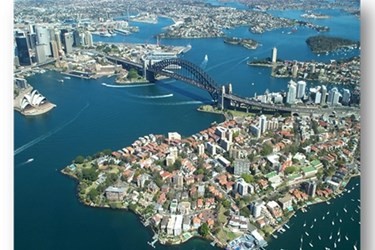What California Can Learn From Australia's Millennium Drought

AWE Releases Report on Australia Drought
Lessons learned during Australia’s worst drought on record are helping California through its own water crisis.
A new report released today shows that strategies developed and mistakes made during Australia’s decade-long millennium drought provide a powerful resource for California, as the state enters its fifth year of severe drought.
“The Australian experience shows that investment in water conservation options provided the cheapest, quickest and most effective contribution to managing demand during the drought,” said Professor Stuart White, director of the Institute for Sustainable Futures (ISF), at the University of Technology Sydney. “Without them many cities and towns would have run out of water.”
Managing Drought: Learning from Australia, a report by researchers at ISF, the Pacific Institute and the Alliance for Water Efficiency, provides an overview of key events and initiatives implemented in Australia’s four largest cities: Sydney, Melbourne, Brisbane and Perth. The report was funded by the Metropolitan Water District of Southern California, the San Francisco Public Utilities Commission, and the Water Research Foundation.
Australia survived the millennium drought by demonstrating world-leading innovation and water planning and management, said Professor White. An important factor in the successes was community involvement which rallied support to lower household water demand to a target of 37 US gallons per person per day.
“California has made significant progress in advancing water conservation and efficiency to cope with the drought, but this report shows that more can be done,” said Heather Cooley, Director of the Water Program at the Pacific Institute, a global water think tank. The state has set conservation targets and communities have implemented short-term water conservation measures, such as restrictions on outdoor watering. But according to Cooley “Australia made much larger investments in water conservation and efficiency, which allowed them to cope with the millennium drought and also reduce vulnerability to future droughts.”
“In Australia, urban water efficiency was the quiet achiever and California can benefit from long-term structural changes in water use by implementing similar water-efficiency measures,” said Mary Ann Dickinson, President and CEO of the Alliance for Water Efficiency. However, she said, the Australian experience also provided lessons of what not to do. “We wanted to document in this report lessons learned that can inform future decisions by California’s policy-makers.”
The New South Wales Government had a policy of “readiness to construct” for its proposed Sydney desalination plant on Botany Bay. However, that was overturned and the contract signed when dam levels were already rising. The result was a $US1.4B stranded asset and a plant that is still in mothballs.
“Having more flexible, modular and adaptable supply options – dams, major pipelines, desalination plants, recycling capacity – can save a lot of money and prevent the construction of stranded assets,” said Professor White.
On top of successes in urban water efficiency, other key findings in the report include:
- Broad community involvement across sectors – households, business, industry and government – fosters a sense of fairness and collaboration in saving water.
- Clear, credible communication about the drought situation and response is needed to maximize public participation and support.
- Innovative water-pricing mechanisms, not employed during Australia’s millennium drought, could be used to incentivize water savings in California.
Source: Alliance for Water Efficiency
